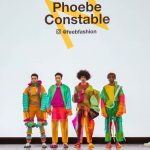
A Place in the World
Friday 9 March – Saturday 28 April 2018
A Place in the World at East Gallery
Opening times: Tuesday – Saturday, 12-5pm. Admission free. Closed for Easter holidays from Friday 30 March to Wednesday 4 April inclusive. A Place in the World is an exhibition of photography and film by women artists at East GalleryNUA, timed to coincide with the Southbank Centre’s Women of the World (WoW) Festival, hosted in Norwich for the first time.
Hannah Starkey, Self Portrait 2008, 2008, C-type print on aluminium.
© Hannah Starkey, courtesy Maureen Paley, London
The works in the exhibition have been assembled as an exploration of the relationship between place and female identity. Place can be taken as location, that of the artist and the subject of the work, or social place and how gender constructs a female artist’s place in society.
Some of the works in the exhibition are self-portraits while others depict women that the artist has some kind of empathy with, the artist sometimes putting herself in their place. Reflection is used as a formal device by some of these artists, either through the photography of an image in a reflective surface, or in the case of a double screen video piece, to reflect the subject of the work.
The core of the exhibition is a series of loans from Arts Council Collection in London. This collection has strong holdings of photography and film by female artists, and a number of works selected for A Place in the World have not been exhibited recently. The exhibition will also show a version of a film installation made by Erika Tan for the Diaspora Pavilion at the Venice Biennale 2017.
Hannah Starkey
Hannah Starkey explores the urban landscape using reflections and mirrors to draw attention to women in their urban environment. The two works shown use reflection as a device to draw the viewer in, effectively maintaining a more prolonged engagement with the viewer.
Iwona Blazwick, Director of Whitechapel Gallery, London, has said that: ‘Starkey’s mastery lies in using composition, colour and surface to pull these iconographic parts into a seamless entirety, spun together like the words of a poem.’
Valerie Wilmer
Valerie Wilmer’s photographs of black urban communities in 1970s America have a refreshing naturalism. Her work is candid but intimate, looking at family, community and home through images that are not posed and have the spontaneity of documentary photography. Wilmer is a musician who started taking photographs while researching jazz music in Mississippi as a young woman and these images were taken as part of Wilmer’s wider fascination with black culture in the southern states of America.
Rosalind Nashashibi & Lucy Skaer
The film Ambassador by Rosalind Nashashibi and Lucy Skaer is a double screen work that explores the domestic environment of a male figure of authority, the British Consul General to Hong Kong in the period soon after the handover of the former colony to China in 1997. He is seen in the domestic setting of the Consulate and the film focuses on what might be thought of as a feminine space and the ambassador’s solitary presence in that space. The use of two screens gives a sense of the interior and exterior of the ambassador’s domestic space and how he inhabits it privately and as part of his professional role.
Ifeyoma Onyefulu
Ifeyoma Onyefulu’s photograph Child Brides, shows young girls whose childhood has been interrupted and violated by marriage, a practice rooted in tradition in certain African countries. Onyefulu is known for her children’s books as well as for her photography and often travels across Africa with her camera, recording life as she sees it.
Alexis Hunter
An important figure in the feminist movement of the 1970s in Britain, Alexis Hunter uses photography as a tool to highlight exploitation of women and their sexuality. The issues Hunter addresses, such as the power relationships between men and women, are as relevant now as they were when she made the images.
Susan Trangmar
Susan Trangmar explores urban and rural landscapes through the careful positioning of the female figure framed within the image and looking into the distance. The work is an invitation for the viewer to look through the subject’s eyes. Trangmar’s artworks arise from specific landscape, architectural and social contexts and explore varying representations of space and place.

Erika Tan, The ‘Forgotten’ Weaver, 2017, film installation
©Erika Tan
Norwich University of the Arts is pleased to champion the WoW Festival in Norwich.
Caroline Douglas and Valeria Napoleone in conversation
On Friday 27 April 2018, as part of WoW Norwich, NUA will host Caroline Douglas, Director of the Contemporary Art Society in conversation with art collector Valeria Napoleone.
Tickets are free and can be booked online – booking details available soon.


